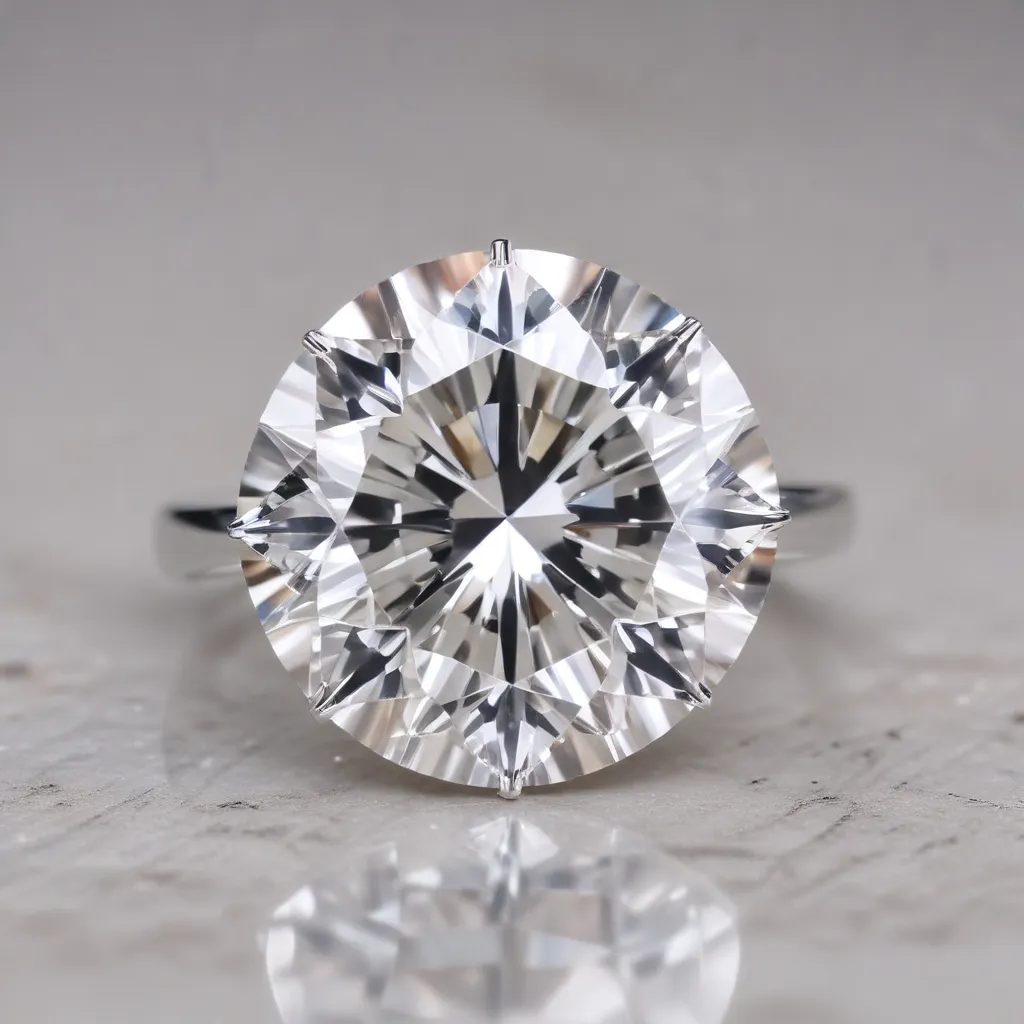
In the ever-evolving world of gemstones, two captivating alternatives to traditional diamonds have emerged: moissanite and cubic zirconia. Both offer a dazzling brilliance and an affordable price point, making them increasingly popular choices for engagement rings, jewelry, and other luxury accessories. As a gem and jewelry expert at Shelby Gem Factory, I’m here to guide you through the nuances of these remarkable synthetic stones, helping you make an informed decision on the perfect sparkle for your needs.
The Cosmic Origins of Moissanite
Moissanite’s story has a touch of the celestial. Discovered in 1893 by the Nobel Prize-winning chemist Dr. Henri Moissan, this fascinating gemstone was initially thought to be diamonds. Moissan found tiny, shimmering crystals in a meteorite crater in Arizona, unaware that he had uncovered a new mineral composed of silicon carbide. This rare natural occurrence gave moissanite a unique space-related origin, adding to its allure.
Today, the vast majority of moissanite is created in laboratories using a process called chemical vapor deposition (CVD). This method allows scientists to produce sparkling moissanite crystals that rival the brilliance of natural diamonds. With its exceptional hardness of 9.25 on the Mohs scale, moissanite is highly resistant to scratches and chips, making it an ideal choice for everyday wear.
The Clarity and Color of Moissanite
One of the standout features of moissanite is its exceptional optical properties. With a refractive index ranging from 2.65 to 2.69, moissanite exhibits a level of fire and brilliance that can even outshine natural diamonds. This mesmerizing interplay of light creates a dazzling display of rainbow-like colors, captivating the eye of the beholder.
In terms of color, moissanite typically ranges from near-colorless to slight shades of yellow or gray. High-quality moissanite, however, can appear almost completely colorless, closely resembling the appearance of a flawless diamond. This versatility allows moissanite to be used in a wide range of jewelry designs, from classic solitaire rings to modern, one-of-a-kind creations.
Understanding Cubic Zirconia
While moissanite has its cosmic origins, cubic zirconia (CZ) has a more earthly beginning. First discovered in its natural form in 1892, this synthetic gemstone gained commercial significance in the 1970s when Soviet scientists developed a method to produce it in laboratories.
Cubic zirconia is created by melting zirconium oxide with other elements, resulting in a durable and visually stunning gemstone. With a hardness of 8-8.5 on the Mohs scale, CZ is less resistant to scratches than moissanite, but it still maintains a remarkable level of durability.
Brilliance and Versatility of Cubic Zirconia
While cubic zirconia may not possess the same level of fire and brilliance as moissanite, it still displays a captivating sparkle that closely resembles that of a diamond. With a refractive index of 2.15-2.18, CZ is known for its ability to refract and reflect light, creating a lustrous and eye-catching appearance.
One of the standout features of cubic zirconia is its versatility. Unlike moissanite, which is primarily available in near-colorless hues, CZ can be found in a vast array of vibrant colors, ranging from stunning blues and pinks to rich greens and elegant yellows. This wide color selection allows for endless design possibilities, making CZ a popular choice for those seeking unique and personalized jewelry.
Comparing the Cost and Value
When it comes to the financial aspect, the differences between moissanite and cubic zirconia become more pronounced. Moissanite, with its superior durability and optical properties, generally carries a higher price tag than CZ. However, it is still significantly more affordable than natural diamonds, making it an attractive option for those seeking a high-quality, diamond-like alternative.
Cubic zirconia, on the other hand, is known for its exceptional affordability. Due to its widespread availability and relatively simple manufacturing process, CZ is often the go-to choice for those on a tighter budget. While it may not possess the same long-term value as moissanite, CZ can still provide a beautiful and cost-effective solution for those seeking a sparkling gemstone.
Sustainability and Ethical Considerations
Both moissanite and cubic zirconia are lab-created, making them environmentally friendly and conflict-free alternatives to natural diamonds. This aligns with the growing demand for sustainable and ethically sourced jewelry, a trend that has gained significant momentum in recent years.
By choosing moissanite or CZ, you can be confident that your purchase supports responsible and transparent practices, ensuring that your jewelry is not only stunning but also aligns with your values.
Choosing the Right Sparkle for You
When it comes to selecting the perfect gemstone for your jewelry needs, the choice between moissanite and cubic zirconia ultimately comes down to your personal preferences and priorities.
If you value durability and brilliance, moissanite may be the ideal choice. Its exceptional hardness and stunning optical properties make it a top contender for engagement rings, daily wear, and other high-impact jewelry. On the other hand, if affordability and a diamond-like appearance are your primary concerns, cubic zirconia offers an attractive and budget-friendly alternative.
Regardless of your preference, both moissanite and cubic zirconia are remarkable gemstones that can add a captivating sparkle to your jewelry collection. Whether you’re shopping for an engagement ring, a special anniversary gift, or simply treating yourself, these synthetic gems offer a world of possibilities to celebrate your style and your love.
To explore the full range of moissanite and cubic zirconia offerings, be sure to visit Shelby Gem Factory. Our skilled team of experts is dedicated to guiding you through the process of selecting the perfect gemstone, ensuring that your jewelry not only shines brightly but also reflects your unique taste and personality.

